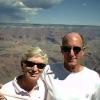Why no green or yellow on NEXRAD?
-
Members Online
- Planegary
- mluvara
- redbaron1982
- tony
- GeeBee
- bigmo
- Air pirate
- chrisburdzy98
- Rogerg
- Deb
- LANCECASPER
- ArtVandelay
- A64Pilot
- 885EW
- eman1200
- Alangj
- Aaviationist
- T. Peterson
- Marc B
- McMooney
- Fly Boomer
- neilpilot
- gmendoza
- Marc_B
- BillyT0020
- sdmideas
- exM20K
- Schllc
- NickG
- tcal780
- Bolter
- hubcap
- PT20J
- Igor_U
- Scott H
- Sixstring2k
- Lax291
- 7.Mooney.Driver.0
- Lincoln
- MarcJohnson
- gabez


Recommended Posts
Join the conversation
You can post now and register later. If you have an account, sign in now to post with your account.